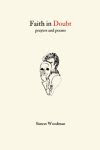There's a great article by Andrew Davies here on Biblical Imagery in the Music of U2
My favourite U2 song (possibly my favourite song of all time, although Martyn Joseph's 'Treasure the Questions' is right up there too) is 'I Still Haven't Found What I'm Looking For', and here's Davies' anaysis of it:
To illustrate the album’s biblical dependencies more specifically, let us briefly consider one of Joshua Tree’s more famous tracks in a little more detail. “I still haven’t found what I’m looking for” is clearly a song about a quest. Whilst in its proposing and dismissing of alternative priorities for living, the song might be thought to have similarities to Qoheleth, essentially it offers a liberationist reworking of the Exodus motif that to my mind pervades the album as a whole, and I think this is reflected in the sound scape of the song as well as in its lyrics.
For example, the track begins with open, accented repeated notes on the lead guitar with a solid and regular beat at a good marching pace. It seems to express a consistency of motion and momentum that is evocative of forward progress through drudgery and effort — perhaps a march onward through the wilderness on the way to the Promised Land. The next instrument to be added is the tambourine, which is not only something of a biblical instrument but also has particular resonance with the Exodus narrative as the accompaniment to Miriam’s song of praise after the Red Sea crossing. The march aspect of the music is more obvious still when the band joins in toward the end of the introduction; the effort and drudgery entailed is, to my mind, emphasized by the bass line, which retains essentially the same pattern throughout the song, with only subtle changes to allow for a slow build in intensity. The same basic pattern is repeated many times over to fade at the end, emphasizing once again the ongoing nature of the search in question, in addition to the writer’s determination and persistence to pursue it despite the effort entailed.
Lyrically, aspects of the Exodus and Conquest motif continue throughout the song too, with mountains needing to be climbed, fields to run through, and city walls to scale in the quest for the object of the writer’s affection. There is, of course, an apparently Christian final verse to the song, and the religious tone of this part of the song is emphasized by the introduction of an organ into the arrangement. This third verse is also interesting for combining something of the language of fundamentalist evangelicalism (emphasized further by the use of a gospel choir in the live version of the song that appeared on U2’s next album, Rattle and Hum) with more progressive religious concepts such as the idea that we are “not there yet,” and talk of “colours bleeding into one.” Perhaps, we are seeing here something of a rejection by U2 of traditional ecclesiastical formulations of Christianity in favor of a more inclusive but engaged approach. Is Bono saying that what he is still looking for is a believing Christianity that rejoices in the operation of its transformative power — for the faith community to assume its responsibility to deliver change in society?













No comments:
Post a Comment